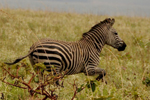
Hong Kong and Guangdong Customs confiscate two shipments of illegal elephant tusks, weighing around 3,813 kilogrammes (8,388 pounds). Photo courtesy of Hong Kong and Guangdong Customs.
Hong Kong authorities have confiscated two massive shipments of elephant tusks, totaling 1,209 tusks, stemming from Kenya and Tanzania. Representing over 600 poached elephants, the shipments are estimated to be worth $3.4 million on the black market. African elephants are being decimated for their tusks in recent years with heavily-armed and well-connected poachers—backed by criminal syndicates—killing off whole herds in some cases.
The shipments represented the largest bust of elephant tusks in Hong Kong history, and highlights the growing threat of the ivory trade to elephant survival.
The bust also comes at an inopportune time for Tanzania, which has applied to the Convention on International Trade in Endangered Species (CITES) to selloff its stockpile of ivory, worth about $55.5 million. The nation says that proceeds from the sale would be used for anti-poaching efforts, but critics contend that allowing a legal sale of ivory during a poaching crisis sends mixed messages and will further endanger wild elephant populations.
The African elephant is listed as Vulnerable by the IUCN Red List. However, recent research shows that there are two very distinct elephant species in Africa: the more commonly known, savannah elephant (Loxodonta africana), and the lesser-known forest elephant (Loxodonta cyclotis). Forest elephant populations have been especially hard hit by poaching
Related articles
Religious fervor drives elephant slaughter
(09/14/2012) The legal ivory trade is failing to protect elephants which are being slaughtered en mass across the African continent to meet demand for religious trinkets, argues a new investigative report published in National Geographic by Bryan Christy.
Conflict and perseverance: rehabilitating a forgotten park in the Congo

(09/19/2012) Zebra racing across the yellow-green savannah is an iconic image for Africa, but imagine you’re seeing this not in Kenya or South Africa, but in the Democratic Republic of Congo (DRC). Welcome to Upemba National Park: once a jewel in the African wildlife crown, this protected area has been decimated by civil war. Now, a new bold initiative by the Frankfurt Zoological Society (FZS), dubbed Forgotten Parks, is working to rehabilitate Upemba after not only decades of conflict but also poaching, neglect, and severe poverty.
Wildlife trade bans may be worsening trafficking of some species, argues paper
(09/18/2012) While founded with good intentions, wildlife trade bans may in some cases be worsening the plight of some endangered species, argues a commentary published in the journal Tropical Conservation Science.
Yuppies are killing rhinos, tigers, elephants
(09/07/2012) Yuppies, not elderly rural consumer, are driving the trade that is decimating some of the world’s most iconic endangered species, including tigers, elephants, rhinos, pangolins, and bears, said experts meeting at a workshop in Vietnam.
Picture of the day: Yao Ming with baby elephant orphaned by ivory trade
(08/27/2012) Former NBA Basketball player and Olympian, Yao Ming is taking his first trip through Africa in order to see the on-the-ground impacts of the black-market ivory and rhino trades in East Asia. Ming, who stands 7-and-a-half feet (2.3 meters), has become not only well-known for his athletic prowess, but also his devotion to endangered wildlife.
A new tool for taking on elephant poaching: DNA forensics
(08/08/2012) One of the difficulties plaguing law enforcement and authorities when it comes to tackling elephant poaching is determining where the ivory originates. Now, research published in the journal Evolutionary Applications, has found a new way of tracking ivory back to wild elephants populations: forensic genetic studies.